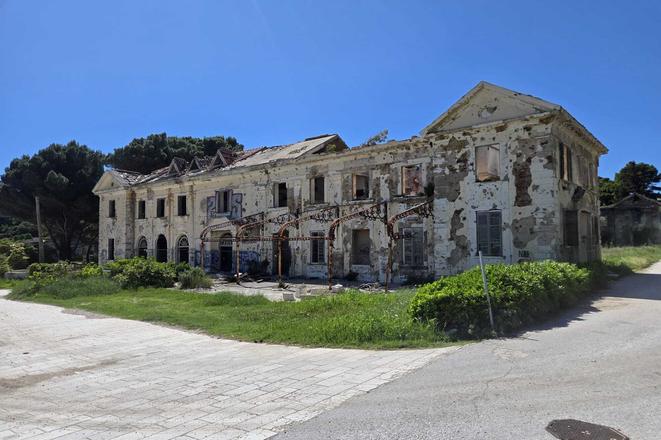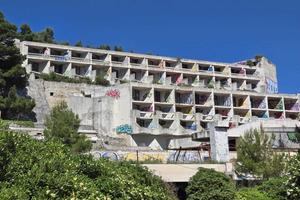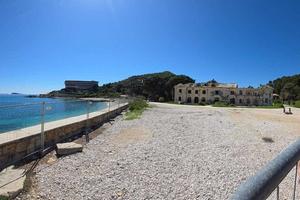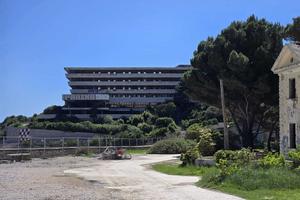The ruin of the former Grand Hotel in the village of Kupari near Dubrovnik is not the sort of sight tourists typically encounter in Croatia. Moreover, this season may be the last opportunity to see it in its original state.
More than a century after its opening, the derelict building still possesses a certain majesty. A construction fence now bars access, but its completely destroyed interior is visible even from a distance through battered doors and broken windows.
The once-prestigious hotel was built by a group of entrepreneurs from the former Czechoslovakia, who envisioned creating an entire Slavic Riviera. It forms part of a complex of five ruined hotels along the Adriatic coast.
Last year, the site was included in the BBC's list of the 12 most fascinating abandoned buildings in the world. In recent decades, only vandals and the curious have ventured inside.
However, the beach below remains open to the public, offering an unusual perspective on the remains of what was once a popular resort.
A completely different story
When it comes to Croatian resorts, recent coverage in the Slovak media has focused on Prime Minister and Smer leader Robert Fico’s mysterious visits to Rogoznica near Šibenik and Defence Minister Robert Kaliňák’s undisclosed villa on the island of Pag.
Other politicians and businessmen connected to the Smer party also frequent luxury villas in Rogoznica and the surrounding region. The port of Sukošan, near Zadar, is another such hotspot.
Former president Ivan Gašparovič regularly holidayed on the strictly protected island of Brijuni, at the invitation of the Croatian government. Former Yugoslav president Josip Broz Tito also had a residence there.
The story of the devastated hotel in Kupari, however, is something altogether different—and one that continues to evolve. In late May, demolition work began on the site. A major Singaporean development company now plans to build an ultra-luxurious resort there.
Of the entire complex, only the historic Grand Hotel—built by hoteliers from the First Czechoslovak Republic—will be preserved, as it is the sole structure under heritage protection. The developer is required to restore it to its original condition.
“The reconstruction of the former Grand Hotel is possible within the existing parameters; all original interior design elements, the façade, and the roof will be preserved,” reads the project documentation.
The article also explores how Czechoslovak entrepreneurs transformed a former brickyard into a hotel, how the Grand Hotel thrived, what led to its decline, how it made the BBC’s list of fascinating abandoned buildings, the arrival of the Singaporean developers, and what they now plan for the Grand Hotel.
From brickyard to Grand Hotel
In his 2019 book Príbehy Firiem (Stories of Companies), Czech historian Rudolf Píša chronicled the history of the Czechoslovak project near Dubrovnik. “I’ve probably been to Yugoslavia and Croatia 30 times. My parents and I used to visit Dubrovnik, so I know the area well and it’s dear to me,” says Píša.

 The Grand Hotel ruins in Kupari near Dubrovnik, Croatia. (source: Michal Katuška)
The Grand Hotel ruins in Kupari near Dubrovnik, Croatia. (source: Michal Katuška)


